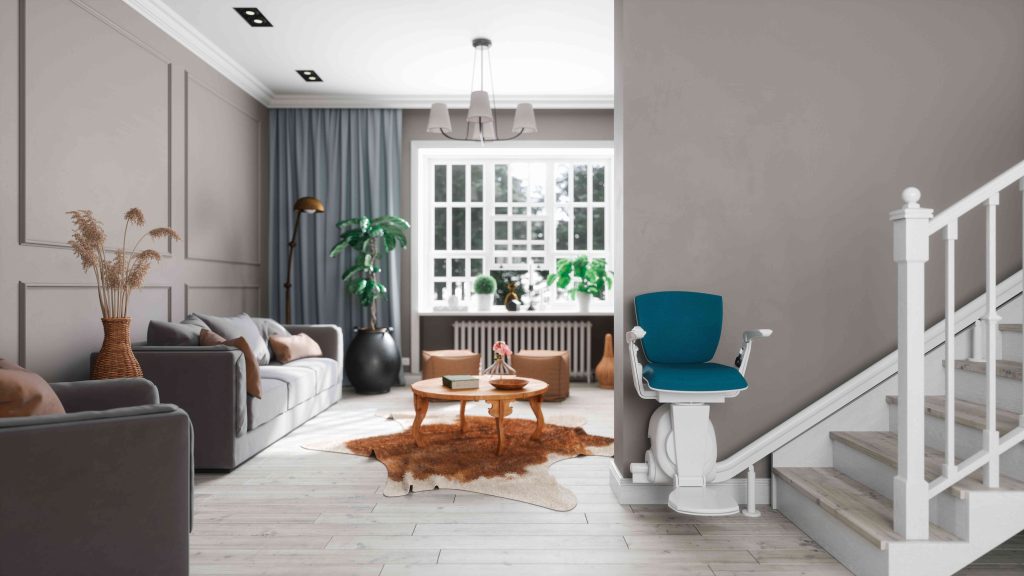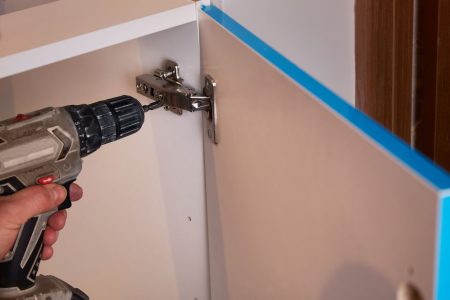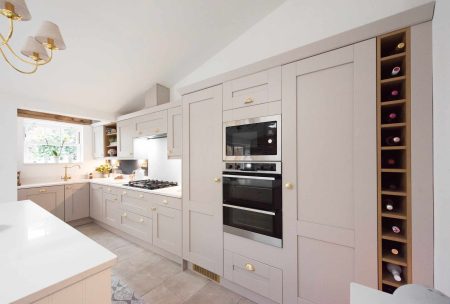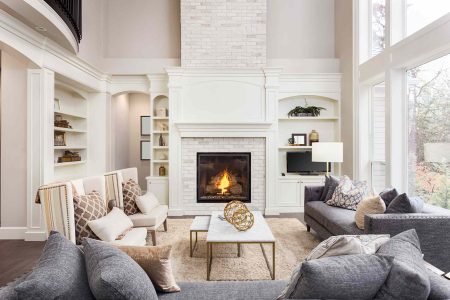As adults age, it may become challenging to get around or complete daily tasks in the home. However, it doesn’t have to be that way—adapting the house can help compensate for decreased mobility and allow older people to stay in their homes longer.
Of course, the best time to adapt your home for future needs is before your health requires it. Real estate and renovation professionals offer tips on aging in place more easily.
Meet the Expert
- Mark Nichols is an architect and strategic construction advisor at Real Estate Bees.
- David Kallie is a certified aging in place specialist for the National Association of Home Builders and the CEO of Dimension Design-Build-Remodel Inc.
- Sean Walsh is a kitchen design and remodeling expert and founder and CEO of Walcraft Cabinetry.
Stay on One Level
First and foremost, updating the home so all living areas are on the first level is key. Climbing the stairs several times daily can be physically painful and also pose a fall risk. Sturdy handrails are a must for people of any age and especially for older people who might be more uneasy on their feet.
Adding a chair lift to get from one level to another is also an option if it isn’t possible to create a bedroom, bathroom, and kitchen on the first floor. However, don’t count out on adding an elevator to your home.
Mark Nichols, an architect and strategic construction advisor at Real Estate Bees, suggests working with an architect to evaluate elevator options for your home.
“There are compact hydraulic elevators that are more cost-effective than you would imagine—the key is finding the minimally disruptive location in the existing floor plan to locate it,” he says. “Work with an architect first to see if this option is viable, it might be more realistic than you think, so don’t write it off initially. There are decent and reasonably priced solutions out there.”
Make Floors Safer
No matter what type of home you live in, keeping clutter off floors reduces the risk of tripping and falling at any age.
The type of flooring you have in your home can also affect your chances of taking a fall. Shag carpeting is a no-go. If carpet is used at all, the pile shouldn’t be more than a half-inch. Consider placing a nonslip flooring material underneath such as rubber, cork, or vinyl, and be mindful of other potentially slippery surfaces like a highly polished wood floor.
Increase Widths
Another thing that can spell trouble for those with mobility concerns is a layout that includes a sunken living room or a high threshold to navigate through when moving from room to room. Installing a ramp over small thresholds can help make it easier to get around.
David Kallie is a certified aging in place specialist for the National Association of Home Builders and the CEO of Dimension Design-Build-Remodel Inc. He encourages older adults to consider increasing the width of doors and hallways indoors to allow for wheelchairs to maneuver if needed. Kallie says opening up the floor plan should give a turning room of five feet by five feet and doorways and hallways that are at least three feet wide.
Revamp the Kitchen
Several changes can make the kitchen safer and more enjoyable for older adults. If someone uses a wheelchair, lower parts of the counters for accessibility, and consider adding pullout shelving, especially in lower cabinets. A pot filler keeps people from having to carry a heavy pot filled with water from the sink to the stove.
Even the basic layout of the kitchen can be revamped for comfort and safety.
“The kitchen triangle rule will become more important than ever in an aging individual’s home,” says Sean Walsh, a kitchen design and remodeling expert. “Tightening up this triangle to provide less traveled distances is essential and will provide a much more enjoyable cooking and cleaning experience.”
Throughout the home, consider upgrading appliances to those that are easier for older adults to use. This includes elevated wall ovens and refrigerators that don’t require you to bend down or reach deep inside.
Install Walk-Ins
Walk-in showers are an ideal bathroom feature for those wishing to age in place, because they don’t have a typical shower threshold, allowing for wheelchair access if needed. Don’t want to give up a soak? Switch out a traditional tub with a walk-in tub. Whichever you choose, be sure to also install grab bars in the appropriate spaces. And be sure they are held steady by being embedded into wall studs. With modified showers of any kind, add a shower seat and handheld shower head to prevent falls.
Don’t forget about the toilet—add a riser seat to reduce the amount of up and down and help save wear and tear on your joints.
Create Smart Lighting
Vision often declines as we age. Simply adding brighter bulbs could help, but make sure they don’t create a dangerous glare. Also, consider the placement of light switches and whether forgetting to turn the light off requires a going back to the other side of a room.
Both of these concerns can be remedied by having watt-appropriate, motion sensor lighting installed, especially in busy rooms such as the living room or kitchen. Having lights come on as you enter a room and turn off when you leave makes it easy to see where you are going and saves a trip back to the switch.
Consider Outdoor Features
Obviously, if your home has steps or a high threshold, a ramp with guardrails is an absolute must. The front of the home is another good spot for motion-sensitive lighting, for safety and security.
Adding a doorbell or an entire smart home security system that allows you to see who is at the door without having to walk directly to it is a big safety feature as well. Another such feature is motion-sensitive lighting at the home’s entrance and any back entrance.
It is very possible to live out your years in your beloved home. Make the appropriate renovations and take the right precautions and your golden years will truly shine.
Read the full article here









